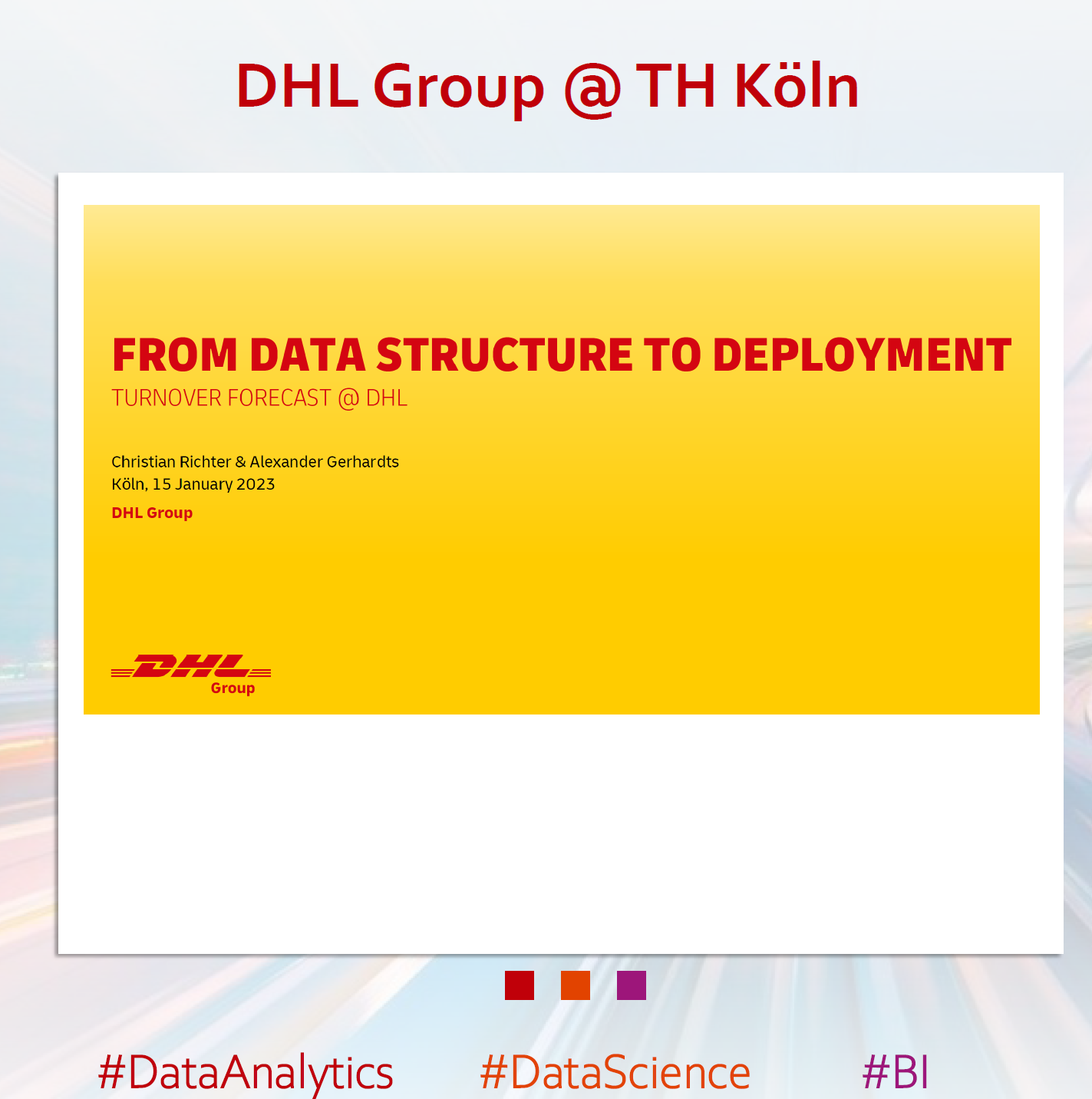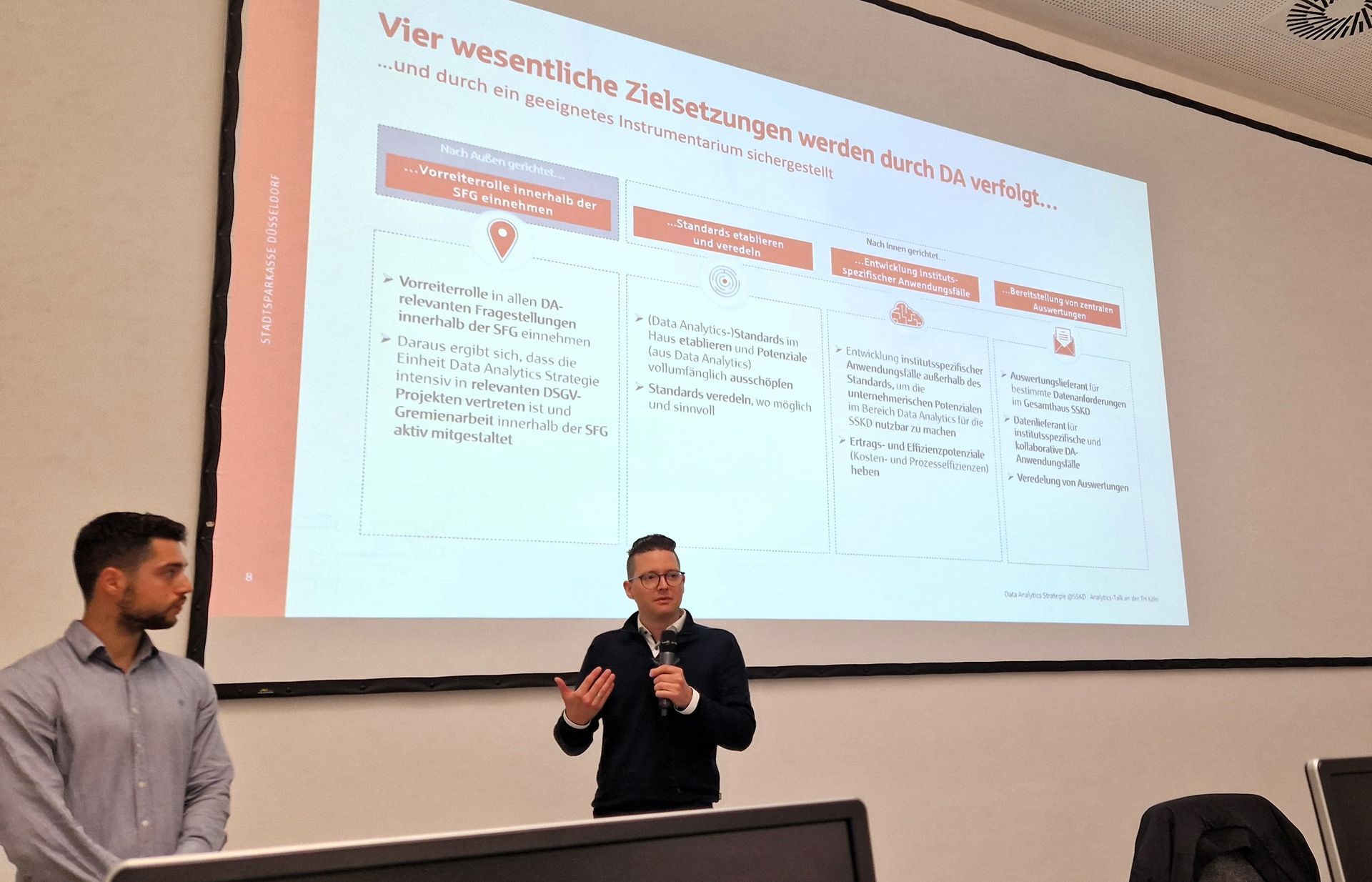YouGov @ TH Köln
Customer Profiles als Self Service BI Dashboard

#Kundenprofile - #BrandAwareness - #Sponsoring?
oder:
#StatistischeTests - #Z-Score - #Konfidenzintervalle ?
Statistische Tests & Hypothesen gehören zum Pflichtprogramm jeder quantitativen Ausbildung! Wie gelingt es uns, diese abstrakt klingenden Themenkomplexe für Studierende erlebbar zu gestalten?
Kurz vor der Weihnachtspause hatten unsere Bachelor-Studierenden der Quantitativen Methoden einen besonderen Gastvortrag: Felix Leiendecker und Maximilian Höchst von YouGov brachten ihre Umfragepanels mit in den Hörsaal:
Mit ihrem interaktiven #BusinessIntelligence #Dashboard hatten sie Zugriff auf über 40Millionen Kundenumfragen, in denen mehr als 170.000 Features dargestellt werden können. Ein phantastischer Datensatz!
Und dann kamen direkt ganz praktische Fragen, die die beiden live und interaktiv beantworteten:
- Wie unterscheiden sich eigentlich BVB- von Bayern Fans?
Für wen das wichtig ist: Bspw. Sponsoren, die #Zielgruppenanalysen aufstellen!
- Was charakterisiert Menschen, die Sport treiben? Und wo wohnen die?
Für wen das wichtig ist: Bspw. FitnessStartUps, die #WerbeContent oder #Locations suchen!
- Wie lange dauerte es, bis Volkswagens Reputation sich vom Dieselskandal erholt hatte?
Für wen das wichtig ist: Bspw. BrandManager
- Was sind die Top-Arbeitgeber für BWL-Studierenden im Rheinland?
Für wen das wichtig ist: Bspw. Hochschulen, die attraktive Praxiskooperation mit der #LokalenWirtschaft etablieren möchten.
Alles Fragen, die schnell zusammengetragen sind und erst einmal gar nicht nach Quantitativen Methoden sondern nach #Kundenzentrierung, #Marktauftritt, #Branding oder #Kundenpräferenzen klingen.
Und was war mit statistischen Tests?? --> Dreh- und Angelpunkt bei jeder Interpretation, bei der Auswahl von wichtigen Variablen, beim Erkennen von wichtigen Zusammenhängen sind #Testergebnisse, die im Hintergrund laufen und den Anwendern signalisieren: "Hier liegen erhebliche Unterschiede zwischen Gruppen vor!"
Statistische Tests zeigen dem Anwender, was im Dickicht großer Datenbestände wichtig ist: Welche der abertausenden Merkmale besonders stark über- oder unterrepräsentiert in der entsprechenden Zielgruppe sind.
In diesem Sinn: Nochmals vielen herzlichen Dank an Felix, Max und YouGov! Ihr habt uns anschaulich gezeigt, welchen Wert statistische Analysen bei ganz praktischen Fragestellungen generieren kann!
Teilen
Auf dem neuesten Stand bleiben
Registrieren Sie sich und Sie werden stets über Neuigkeiten informiert.








